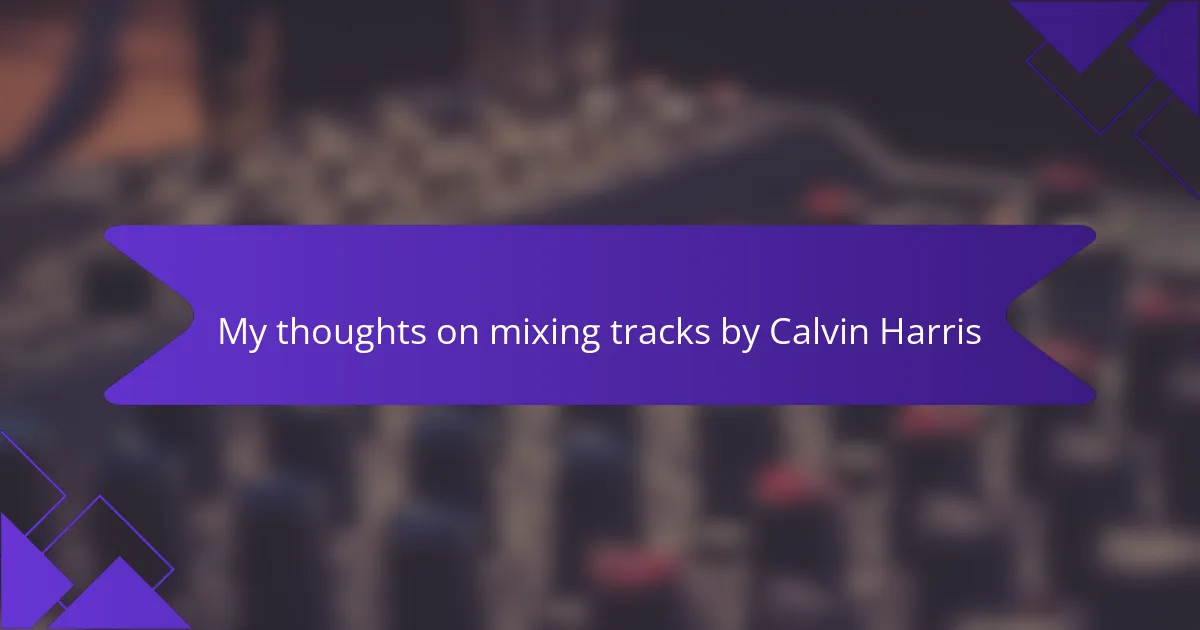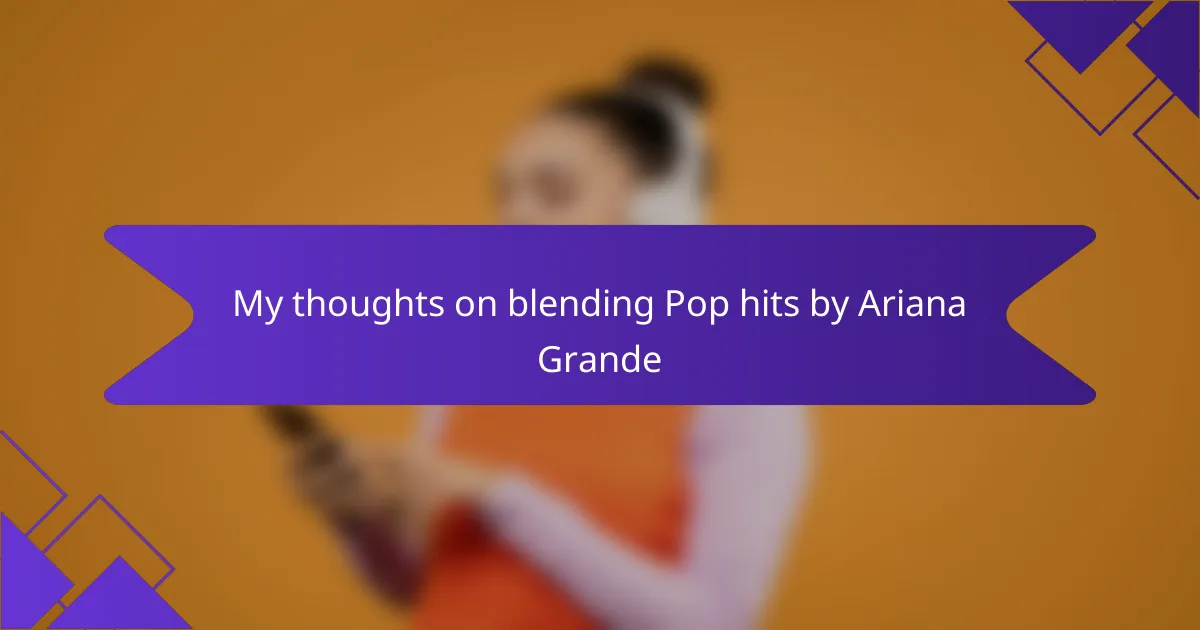Key takeaways
- DJ entertainment merges music with audience engagement, offering flexible setlists and a wide variety of genres.
- Grunge music, characterized by its raw sound and themes of angst, deeply influences listeners’ emotions and social connections.
- Nirvana, a key figure in the grunge movement, shaped the genre with their introspective lyrics and unique sound, resonating with feelings of disillusionment.
- Favorite Nirvana tracks, like “Come As You Are” and “Lithium,” evoke strong personal connections and reflect universal struggles in life.

Understanding DJ Entertainment
DJ entertainment is a dynamic fusion of music, creativity, and audience engagement. As a DJ, I truly believe that understanding the vibes and classic tunes that resonate with listeners is essential for creating unforgettable experiences. Getting to know various genres, like grunge, allows me to craft sets that not only entertain but also evoke nostalgia and strong emotions.
When I’m mixing tracks from legends like Nirvana, I notice how the raw energy and authenticity of their sound just hits differently. It’s about finding that groove that makes people connect with the music and each other, and that’s the heart of DJ entertainment.
Here’s a quick comparison highlighting key elements of DJing versus live band performances:
| Aspect | DJ Entertainment | Live Band |
|---|---|---|
| Flexibility | Highly adaptable setlists | Fixed repertoire |
| Audience Interaction | Engagement through mixing | Engagement through performance |
| Variety of Music | Wide-ranging genres and remixes | Limited to band’s style |
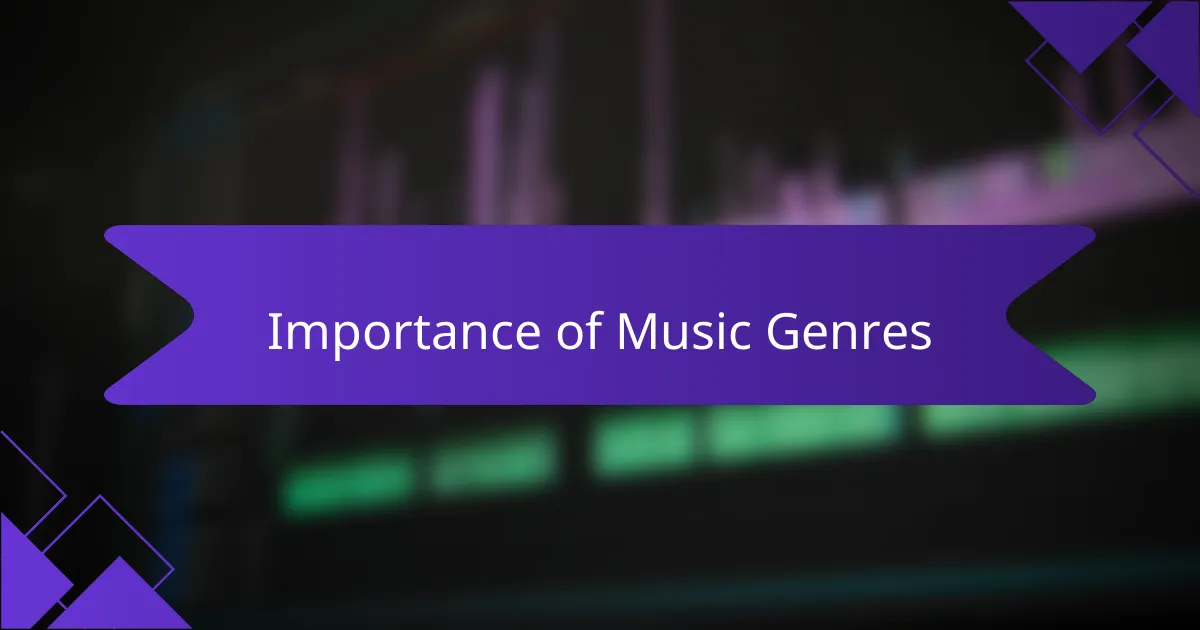
Importance of Music Genres
Music genres hold a significant place in our listening habits and personal identities. For many, including myself, grunge classics from bands like Nirvana serve not just as entertainment but as a soundtrack to our feelings and experiences. I remember blasting “Smells Like Teen Spirit” during my teenage years, feeling a connection to its raw emotion and rebellious spirit.
Genres influence not only our mood but also our social interactions. When I host DJ nights, I often incorporate different styles, but grunge always resonates deeply with the crowd, stirring nostalgia, shared experiences, and a sense of belonging.
| Feature | Grunge |
|---|---|
| Emotion | Raw, often melancholic |
| Influence | Punk, Metal, and Alternative Rock |
| Audience | Young adults seeking authenticity |
| Theme | Alienation, angst, and rebellion |

Overview of Grunge Music
Grunge music emerged in the late 1980s and became a dominant force in the early ’90s. It blended punk rock’s raw edge with heavy metal’s sound, creating a genre that captured the angst and disillusionment of a generation. I often feel that the gritty, authentic vibes of grunge speak directly to those moments of struggle many of us relate to.
As I explore grunge classics, I can’t help but reflect on the emotional depths they convey. Songs like “Come As You Are” highlight themes of acceptance and self-discovery. I remember sitting with friends, sharing our thoughts about life while those haunting melodies played in the background, sparking real conversations that lingered long after the music ended.
Listening to grunge isn’t just about the sound; it’s about the experience it fosters. The genre invites listeners to embrace their vulnerabilities, making it relatable. Have you ever found a song that resonated with your feelings? That’s the magic of grunge—its ability to channel emotions and create a sense of unity among those who vibe to its timeless classics.

Key Characteristics of Grunge Classics
Grunge classics, especially those from Nirvana, have an undeniable rawness that resonates with listeners. Their sound is characterized by heavy guitar riffs, distinctive bass lines, and a vocal style that swings between melodic and intense. I remember the first time I heard “Smells Like Teen Spirit”; the energy was electric and made me feel a mixture of nostalgia and rebellion.
Another defining feature is the lyrical content, which often explores themes of angst, disillusionment, and social issues. The blending of emotional vulnerability and gritty sound always strikes a chord with me. It’s like the music captures feelings many of us struggle to express—there’s something wonderfully cathartic about it.
The grunge aesthetic, marked by flannel shirts and an unrefined look, also plays into the music’s ethos, representing a break from polished pop culture. It’s a reminder that authenticity matters, both in music and in life.
| Characteristic | Description |
|---|---|
| Sound | Heavy guitar riffs and a mix of melodic and intense vocals |
| Lyrical Themes | Exploration of angst, disillusionment, and social issues |
| Aesthetic | Casual, unrefined fashion representing authenticity |
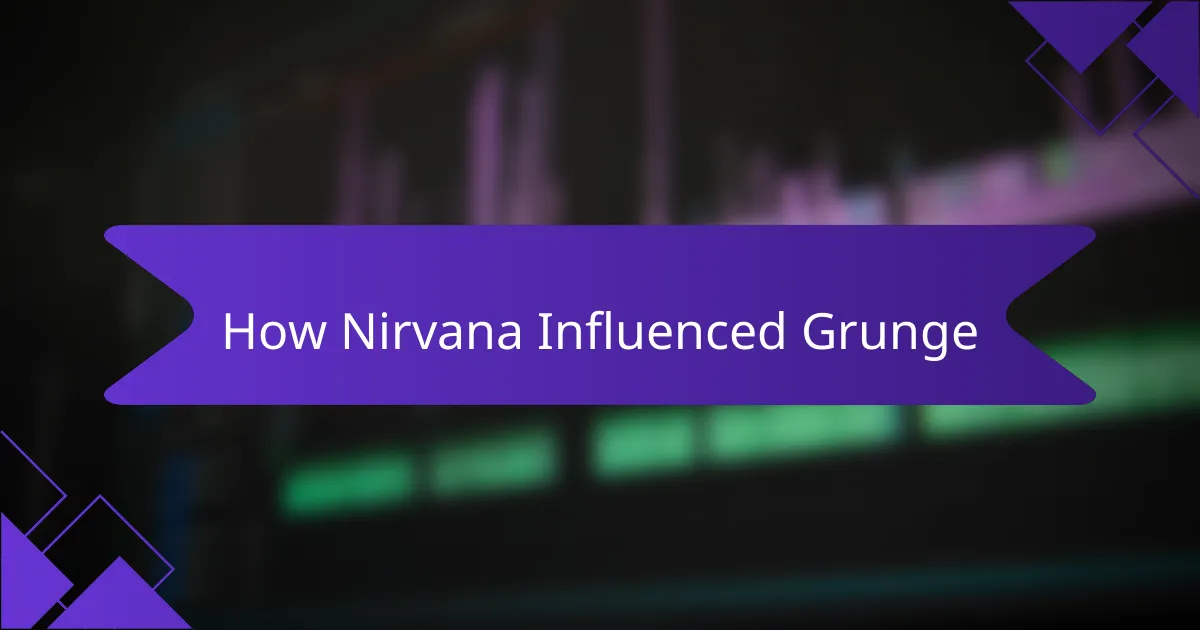
How Nirvana Influenced Grunge
Nirvana, led by the iconic Kurt Cobain, was a cornerstone of the grunge movement in the early ’90s. Their raw sound, combining punk rock energy with introspective lyrics, resonated with a generation feeling disillusioned. I vividly remember listening to “Smells Like Teen Spirit” for the first time; it was like a cathartic release, encapsulating that sense of teenage angst we all experience.
The band didn’t just bring grunge to the forefront; they defined it. Their ability to mix catchy hooks with themes of despair and confusion became a template for countless other artists. I often find myself reflecting on how their music still connects with listeners today, evoking strong emotions no matter how much time passes.
Here’s a comparison of Nirvana’s key influences and their impact:
| Influence | Impact |
|---|---|
| Raw Sound | Defined the grunge aesthetic, challenging polished mainstream rock. |
| Introspective Lyrics | Created a deeper emotional connection with fans, resonating with universal feelings of alienation. |
| Punk Rock Roots | Inspired a wave of new artists to embrace a rebellious spirit in their music. |
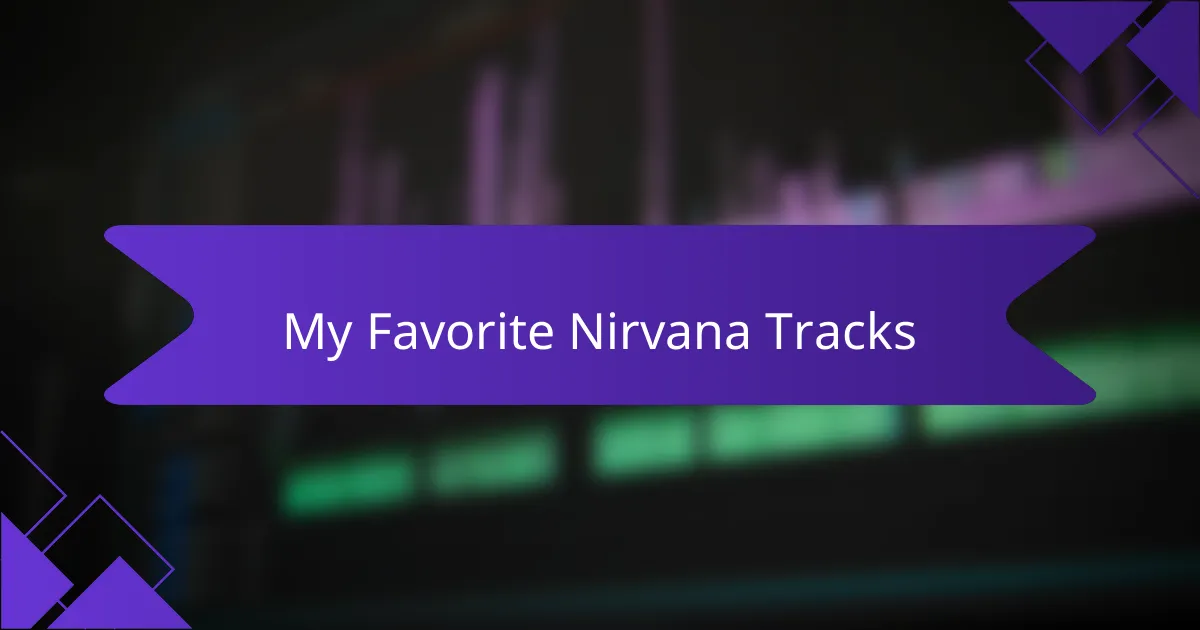
My Favorite Nirvana Tracks
When I think about my favorite Nirvana tracks, “Come As You Are” stands out vividly. The song’s message of acceptance resonates deeply with me, reminding us to embrace who we are without pretense. I recall sitting with friends in a dimly lit room, the gentle strumming of the guitar creating a warm atmosphere. It felt like we were sharing secrets through the music, connecting on a level that words often fail to reach.
Then there’s “Lithium,” a track that perfectly captures the tumultuous rollercoaster of emotions we all experience. I remember listening to it during my ups and downs, feeling like it echoed my internal struggles. The way it shifts between calm verses and explosive choruses feels almost therapeutic. Have you ever found yourself singing along passionately, feeling like the lyrics were written just for you? That’s the power of Nirvana—they articulate feelings that often seem too complex to express.
Of course, I can’t overlook “All Apologies.” There’s something haunting yet comforting about it. I often reflect on how it encapsulates feelings of regret and longing, yet it’s delivered with an almost serene quality. Each listen feels like a journey into introspection, prompting me to consider my own experiences and choices. This depth is what keeps me coming back to Nirvana’s music, finding new meanings with each spin.

